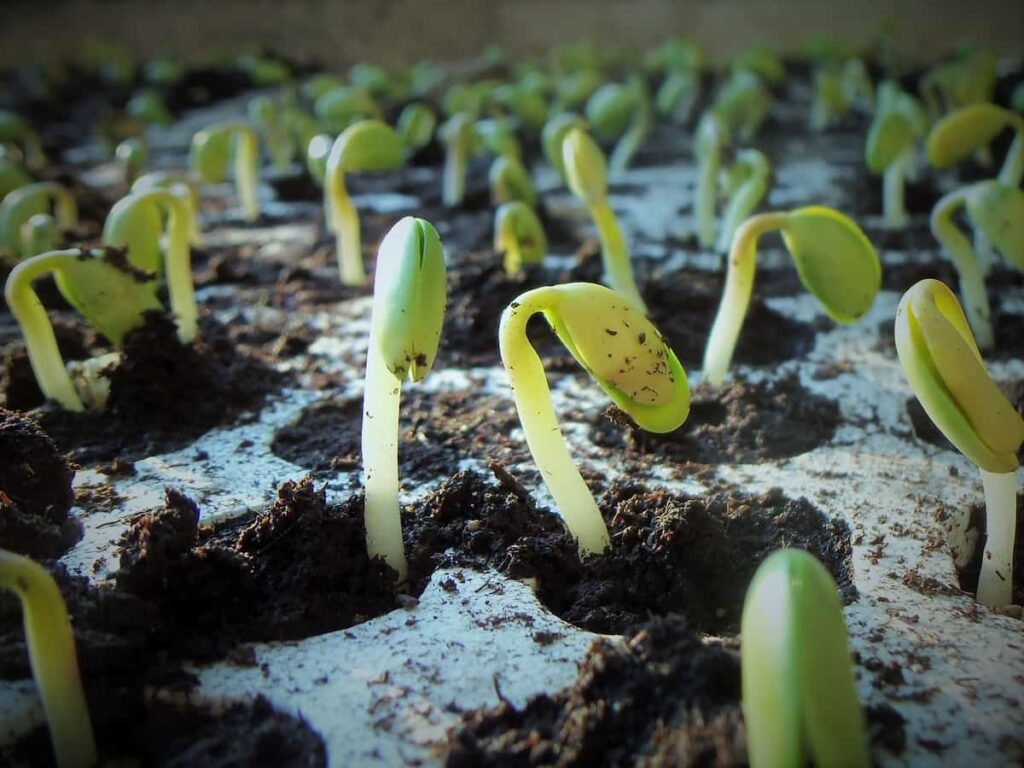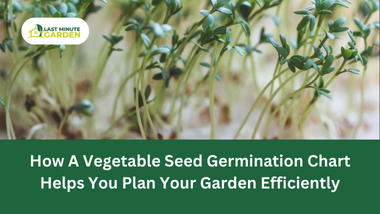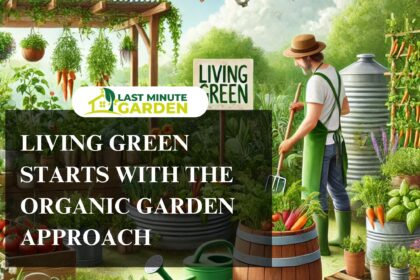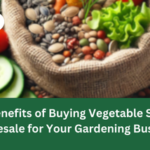Did you know using a vegetable seed germination chart can boost your vegetable yields by up to 30%? This tool changes how you plan your garden, helping your crops grow better.
A germination chart gives you key info on what each vegetable seed needs. It tells you the best soil temperature, how deep to plant, and how long it takes to germinate. Knowing this helps your seeds sprout and grow well.
Whether experienced or new to gardening, a germination chart makes planning easier. It helps you decide when and how to plant your veggies. This way, you get the most from your garden and avoid problems like failed crops or uneven growth.
Importance of a Vegetable Seed Germination Chart
Here are some benefits of using vegetable seed germination chart;
- Having a germination chart helps you plan your garden layout and schedule. It tells you the best soil temperatures, planting depths, and when to expect sprouts. This information enables you to decide when to start seeds indoors and when to move them outside for a great harvest.
- Using a germination chart can boost your harvest and prevent crop failures. It shows you what each vegetable needs for growth. This leads to healthier plants, stronger roots, and a bigger harvest of your favorite veggies.
- It helps you determine the optimum temperature for germinating your particular type of seed. This is important because different seeds have different temperature requirements for germination.
- A germination chart can help you plan your gardening schedule. Knowing the optimum temperature for germinating your seeds, you can plan when to start your seeds so that they will be ready to plant when the weather is right.
Key Elements of a Vegetable Seed Germination Chart
Soil temperature and humidity levels, time, and planting depth are all key in determining the success of germination. Some of these elements are elaborated below;

1. Soil Temperature and Humidity Levels
Different types of seeds prefer different temperature ranges for germination, so it’s important to do your research before planting.Some seeds need cooler soil, while others prefer warmer. Your chart shows the best temperature for each seed type.
Humidity is also crucial for seed germination. Seeds need enough moisture to start growing. Your chart tells you the best humidity levels for each seed.
This increases the chance of your seeds growing into healthy plants. Paying attention to these details can make your garden flourish or fail.
| Vegetable | Ideal Soil Temperature | Ideal Humidity Range |
| Tomatoes | 70-85°F | 65-85% |
| Carrots | 55-75°F | 60-75% |
| Broccoli | 60-80°F | 55-75% |
| Lettuce | 45-75°F | 50-70% |
2. Optimal Planting Depth for Each Vegetable
Each vegetable seed has its own planting depth needs. A vegetable seed starting guide gives you these details.
For instance, carrots and lettuce need a shallow depth of 1/4 to 1/2 inch. Tomatoes and peppers prefer 1 to 2 inches. Following these soil temperatures for vegetable seed tips is crucial for healthy seedlings.
Use a detailed vegetable seed germination chart to find the right depth for each plant. This knowledge ensures your garden thrives.
| Seeds | Planting Depth |
| Tomatoes | 1/4 to 1/2 inch |
| Carrots | 1/4 to 1/2 inch |
| Lettuce | 1/4 to 1/2 inch |
| Beans | 1 to 2 inches |
Estimating Germination Time for Vegetables
The time it takes for seeds to germinate varies a lot. It depends on the seed type, soil temperature, and other factors. Some seeds sprout quickly, while others take weeks.
- Fast-germinating vegetables: Radishes, lettuce, and spinach sprout in 3-7 days.
- Moderate-germinating vegetables: Tomatoes, peppers, and cucumbers take 7-14 days.
- Slow-germinating vegetables: Carrots, parsnips, and onions need 14-21 days or more.
| Vegetable | Germination Time (Days) | Optimal Soil Temperature (°F) |
| Radish | 3-7 | 60-85 |
| Lettuce | 4-8 | 40-75 |
| Spinach | 6-12 | 40-75 |
| Tomato | 6-12 | 70-85 |
| Pepper | 10-21 | 70-85 |
| Cucumber | 3-12 | 70-85 |
| Carrot | 12-18 | 55-75 |
| Parsnip | 14-21 | 50-75 |
| Onion | 7-14 | 50-75 |
The seed Germination chart guides you on when to start seeds indoors, transplant them outside, and how to create the best growing conditions.
Factoring in Seasonal Variations and Climate Zones
You should adjust your planting schedule to match your local weather.The temperature, humidity, and daylight ensures your vegetable seed starting guide meets your area’s needs.
Here are important tips:
- Follow the recommended sowing times for your vegetables, as they vary by location.
- Change planting depths and spacing for soil temperature and moisture changes.
- Try succession planting to keep your garden productive longer.
Stay in touch with your local environment and use a good vegetable seed germination chart to grow a garden that gives you enough food all year.
Seed Viability and Storage Tips for Successful Germination
How long seeds last and how to store them to extend their shelf life can be found on a seed germination chart.
To keep your seeds in great shape, follow these storage tips:
- Store seeds in a cool, dry, and dark spot, like a fridge or a seed container.
- Make sure the storage area is well-ventilated and has a steady temperature and humidity.
- Sort your seeds by type and label them with their name, date, and storage tips.
- Regularly check your seeds and throw away any that look bad, like they’re moldy or discolored.
Combining a Germination Chart with Other Gardening Resources

As a dedicated gardener, you know how important a vegetable seed germination chart is.
But its true power comes from working with other gardening strategies such as soil preparation, companion planting, and pest control. This plan will help your vegetable garden succeed for a long time.
Soil preparation is key for healthy plants. Use your germination chart with tips on soil testing, nutrients, and amendments to ensure your seedlings have the best soil.
Also, learn about companion planting to keep pests away, attract good bugs, and improve plant health. Your germination chart can help you know when to add these plants for the best results.
Pest management is vital for a healthy garden. Use your germination chart with info on organic pest control. This includes crop rotation, natural repellents, and beneficial insects. This approach protects your plants and makes your garden more sustainable.
Summary
A vegetable seed germination chart is a great tool for extending your growing season. By picking the right varieties for early, mid, and late seasons, you can enjoy a longer harvest. This means more fresh produce for you.
The chart helps you plan your plantings by showing when and how to plant different vegetables. This way, you make the most of your growing season, no matter where you live.
Think of a germination chart as your gardening partner. It helps your garden grow strong and healthy.





